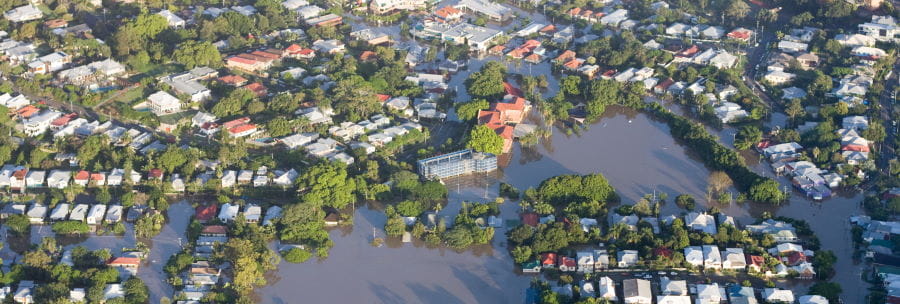The seen and unseen dangers of flooding

Flooding is the most common natural disaster in Australia and causes great loss of life. Unfortunately, most fatalities occur because people underestimate the danger they are in or are entering into.
Flood conditions change rapidly, and it is usually difficult to tell the speed of the current. The lack of water visibility conceals hazards that could trap or injure you, as well as concealing the quality of the road which may be severely degraded by the water.
Some simple understanding of the nature of floodwater could save a life.
How many people drown through flooding?
During the ten-year period between the 2011-12 and 2020-21 financial years, 924 people fatally drowned in Australian rivers, creeks, lakes and dams. 8% of these incidents were flood related.
Why is flooding so dangerous?
Flooding and flood waters are dangerous and can increase your risk of drowning for a number of reasons: conditions can change quickly (e.g. flash flooding), there can be strong currents, it is often difficult to tell the speed of the current, water visibility can change hiding hazards, as well as animals such as snakes and crocodiles being washed into the water.
What is flash flooding?
Flash flooding is flooding that develops very quickly from short, intense bursts of rainfall such as from severe storms. Sometimes the onset of flash flooding comes before the end of heavy rains. Swift action is essential to the protection of life and property as water levels can rise extremely quickly, in some cases rising metres in minutes. Some flash flooding occurs away from where the rain fell, thus creating a false sense of safety. Always keep an eye on the water level when in, on or near rivers and go to safety as quickly as possible if the water level starts to rise.
How can you stay safe in floodwaters?
Boating, driving and walking in flood areas should be avoided unless absolutely necessary.
Boating in floodwaters
- If you are in a metal boat, keep away from power lines and power poles.
- If you are in a wooden or fibreglass boat, do not touch the water or metallic parts of the motor when near wires or poles.
- Consider all fallen wires as dangerous.
- Keep the boat away from guy wires. Metal of the boat or its engine touching a metal guy wire on a pole can cause a spark that may ignite any oil or petrol on the water’s surface.
- Wear a life jacket at all times and carry items such as: oars, extra fuel, anchor etc.
Driving in floodwaters
- Avoid driving in flooded areas at all costs.
- Enter only if absolutely essential and safe to do so, and proceed slowly and steadily.
- Don’t enter flood waters before checking depth and current. Beware of wash-outs, fallen power lines and floating objects.
- Upon leaving the flooded area, dry out brakes by applying light pressure until grip returns.
- If your vehicle becomes stranded in flood water, leave it and move to higher ground before the water rises further.
- Avoid driving at night – potholes and clean water cannot be seen.
Walking or swimming in floodwaters
- Don’t swim in flood water – it is usually contaminated and often contains hidden snags, strong currents and other hazards.
- Avoid wading, even in shallow flood water, for the reasons mentioned above.
- If you must enter shallow water, wear shoes to protect your feet. Don’t proceed beyond waist-depth unless absolutely necessary (and only if there is no obvious current).
- Keep in contact with other people. Work in pairs, do not go anywhere alone.
- Take care on foot bridges and walkways as they may be extremely slippery